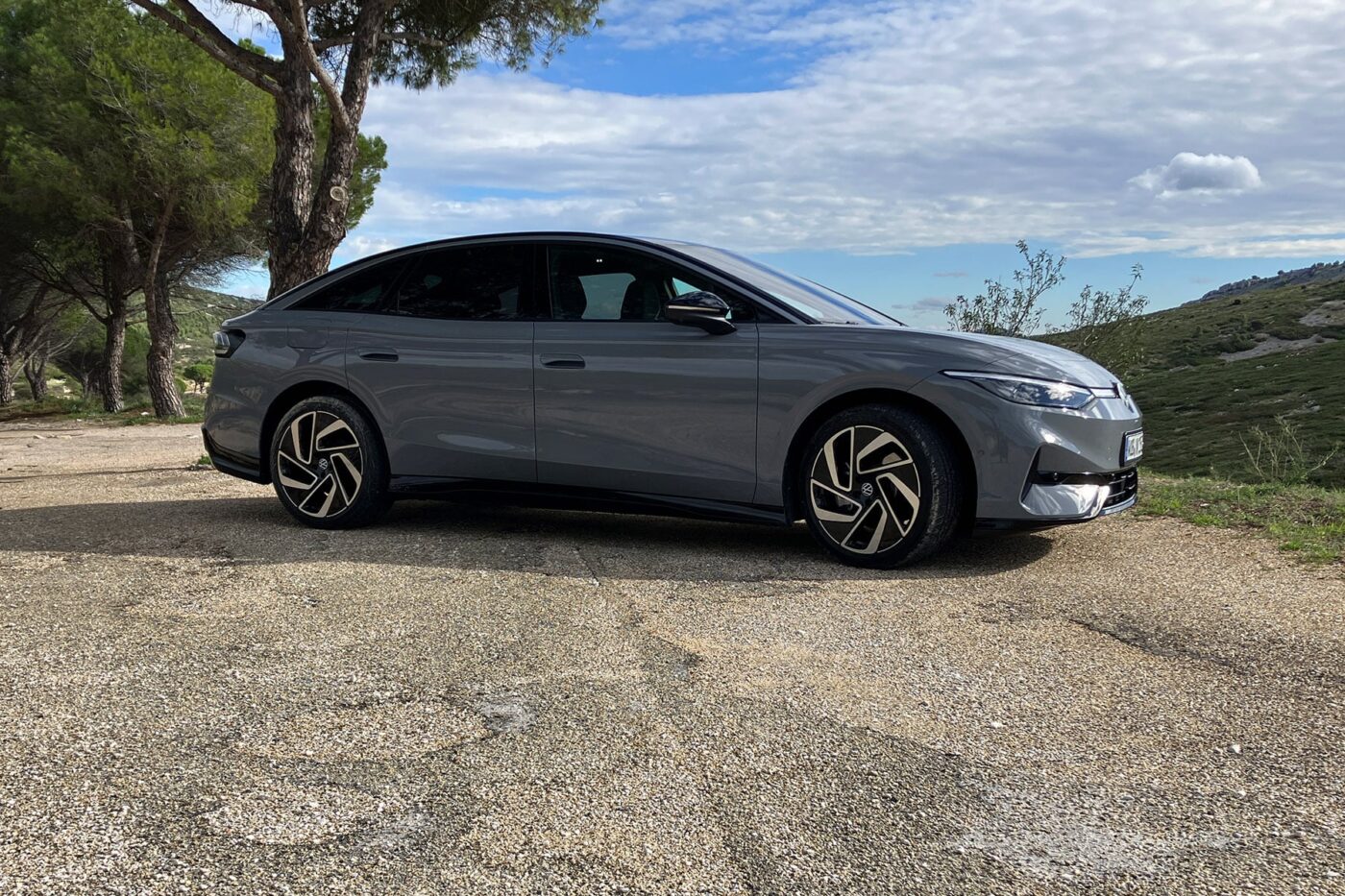
Efficient at last: Has the VW ID.7 got what it takes for a top company car?
The ambience for our first drive in the almost five-metre-long hatchback could not be more beautiful. In French Provence, the sun sinks towards the horizon and bathes the colourful forests north of Marseille in a wonderfully warm light. We glide quietly and comfortably through this autumn spectacle, which already provided a source of inspiration for Van Gogh and Monet. Our test car, a mouse-grey ID.7, the flattest model among all the ID. cars, almost blends in entirely in this bright splendour of November colour.
This fits rather well with the image Volkswagen has always exuded. A bit staid, very German. Just don’t stand out! And yet, what VW has put on wheels here is something to be proud of. The ID.7 has nothing to hide. This electric car promises one thing above all: plenty of space. At almost five metres (4,961 mm), the short overhangs typical of the MEB platform ensure a wheelbase of nearly three metres (2,971 mm). Whether behind the wheel or on the (perhaps a tad too steep) rear bench – the ID.7 leaves plenty of room even for long legs. And even more so for the family.
In this respect, the elongated silhouette with its proud character line below the window shoulder will likely appeal to two target groups: The family man and the company car driver – sometimes both in one person. Above all, however, this electric Volkswagen is likely to appeal to those who avoid SUVs – and drive longer distances for work.
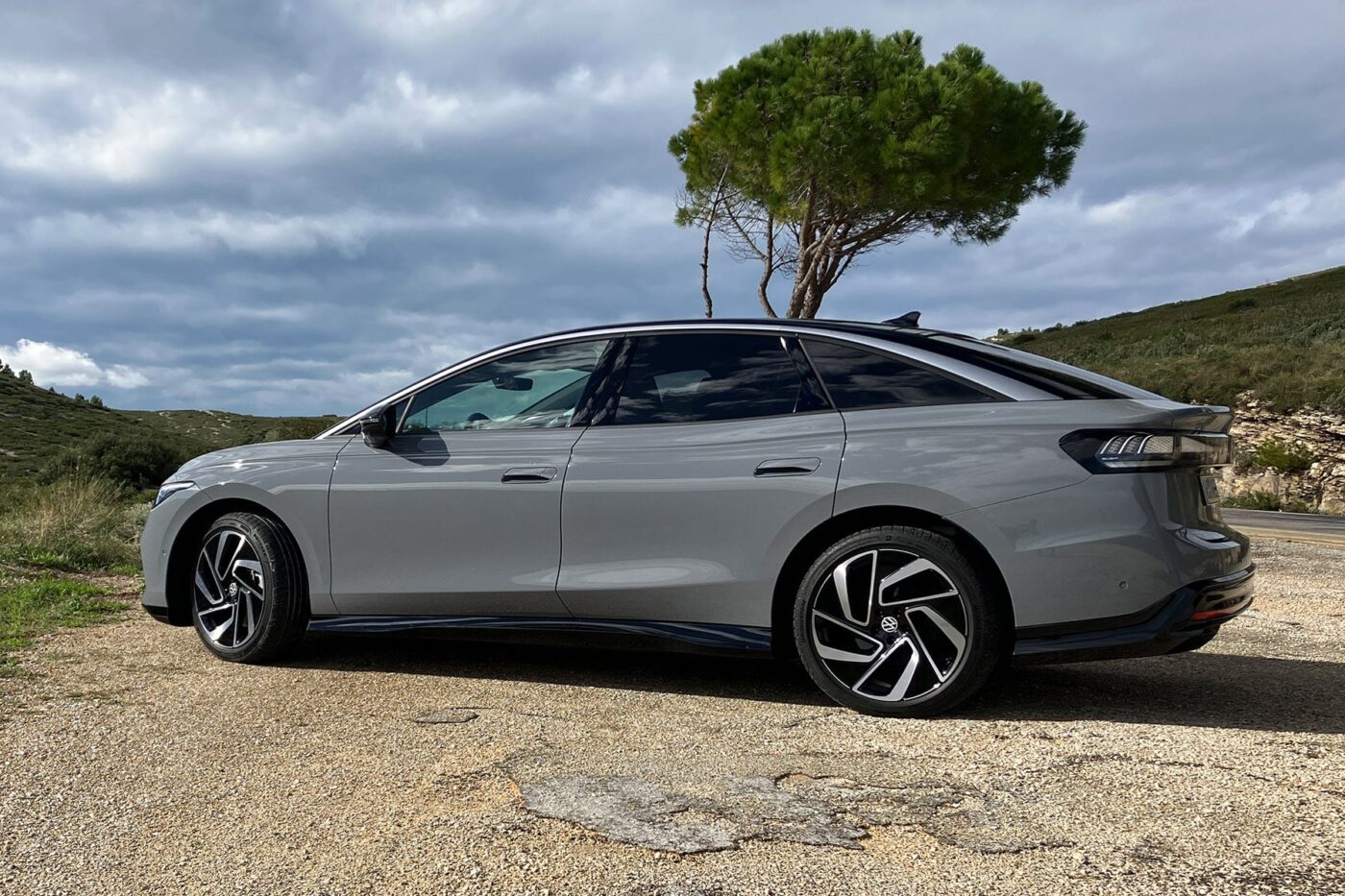
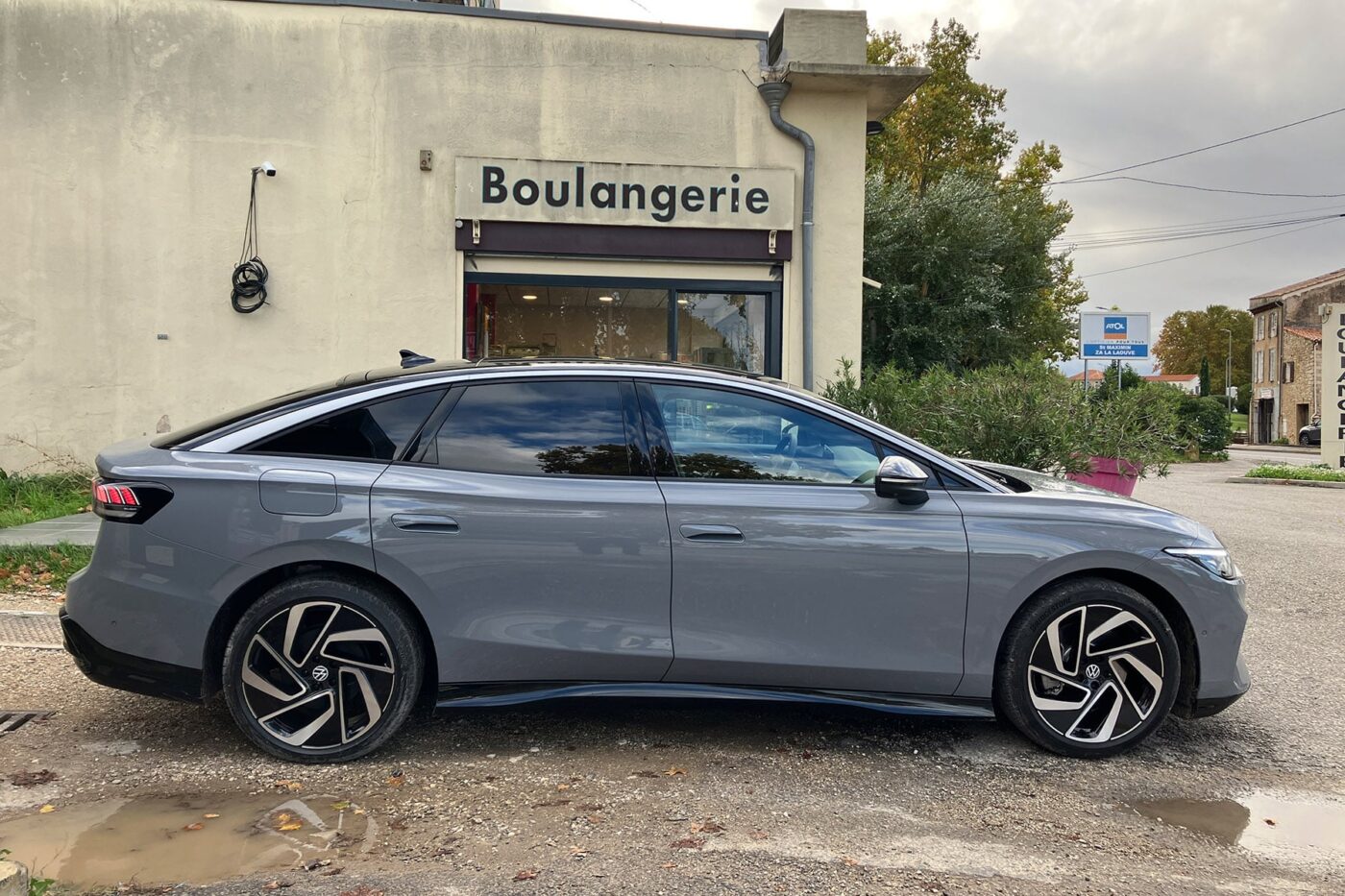
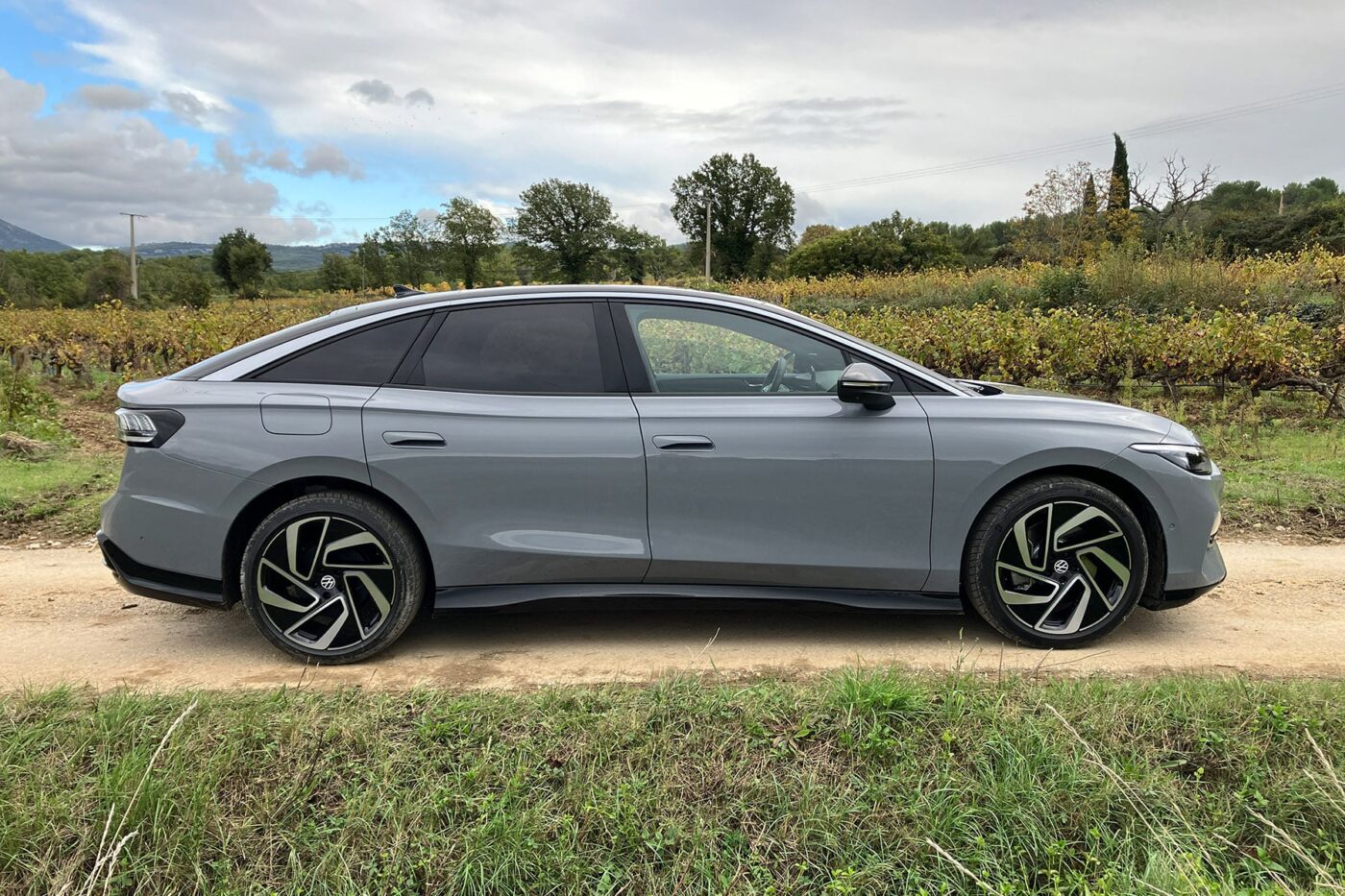
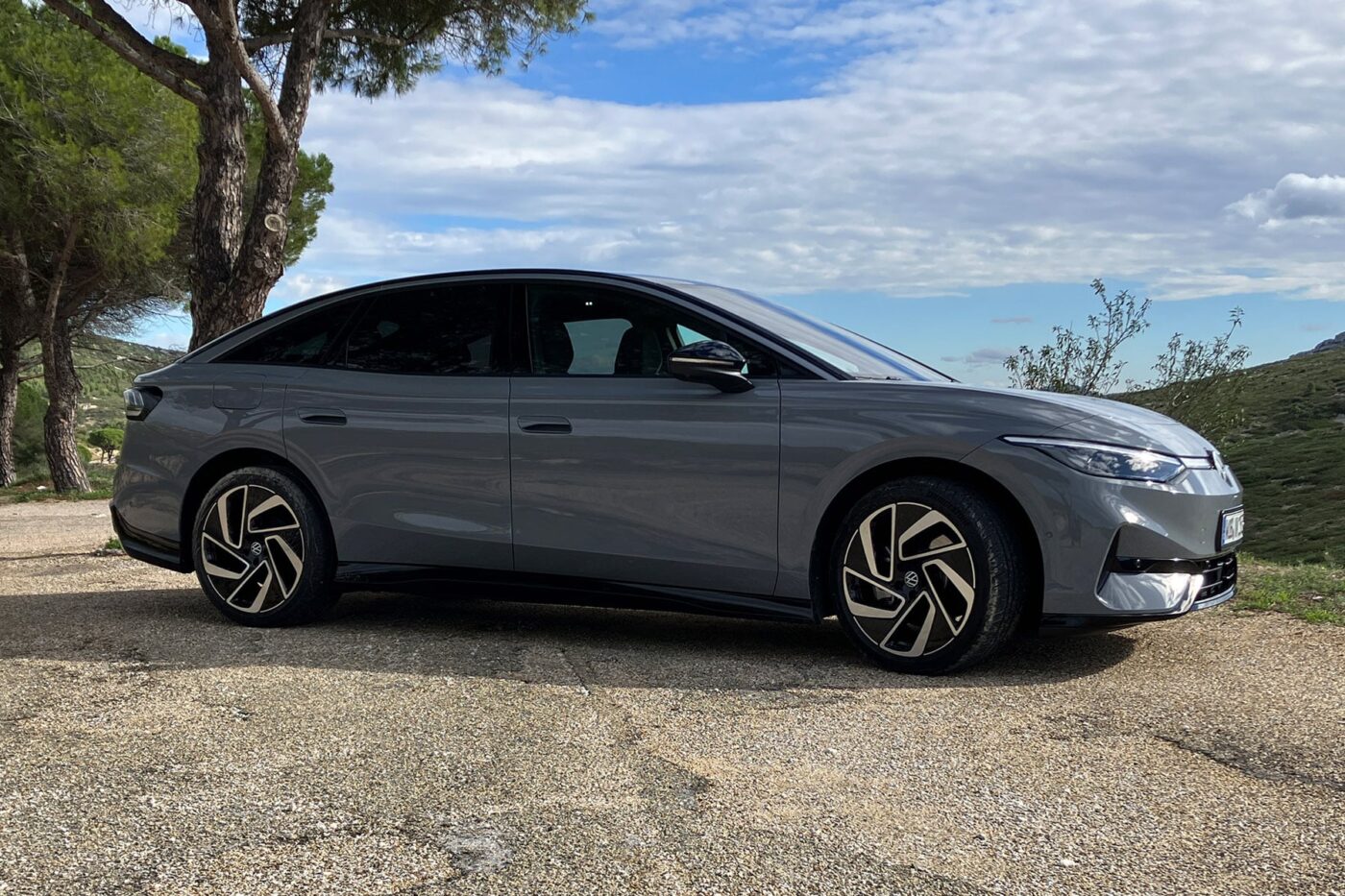
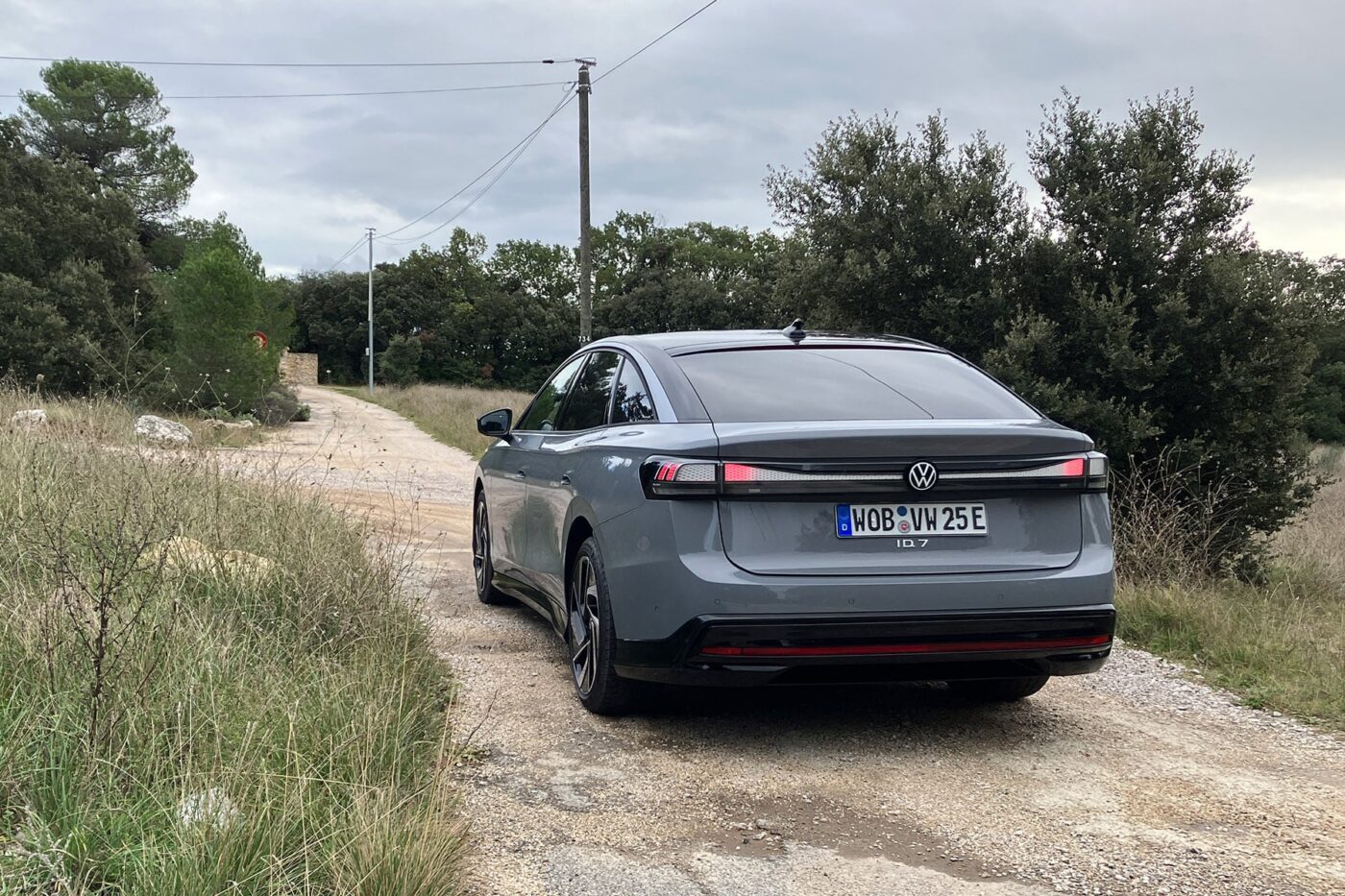
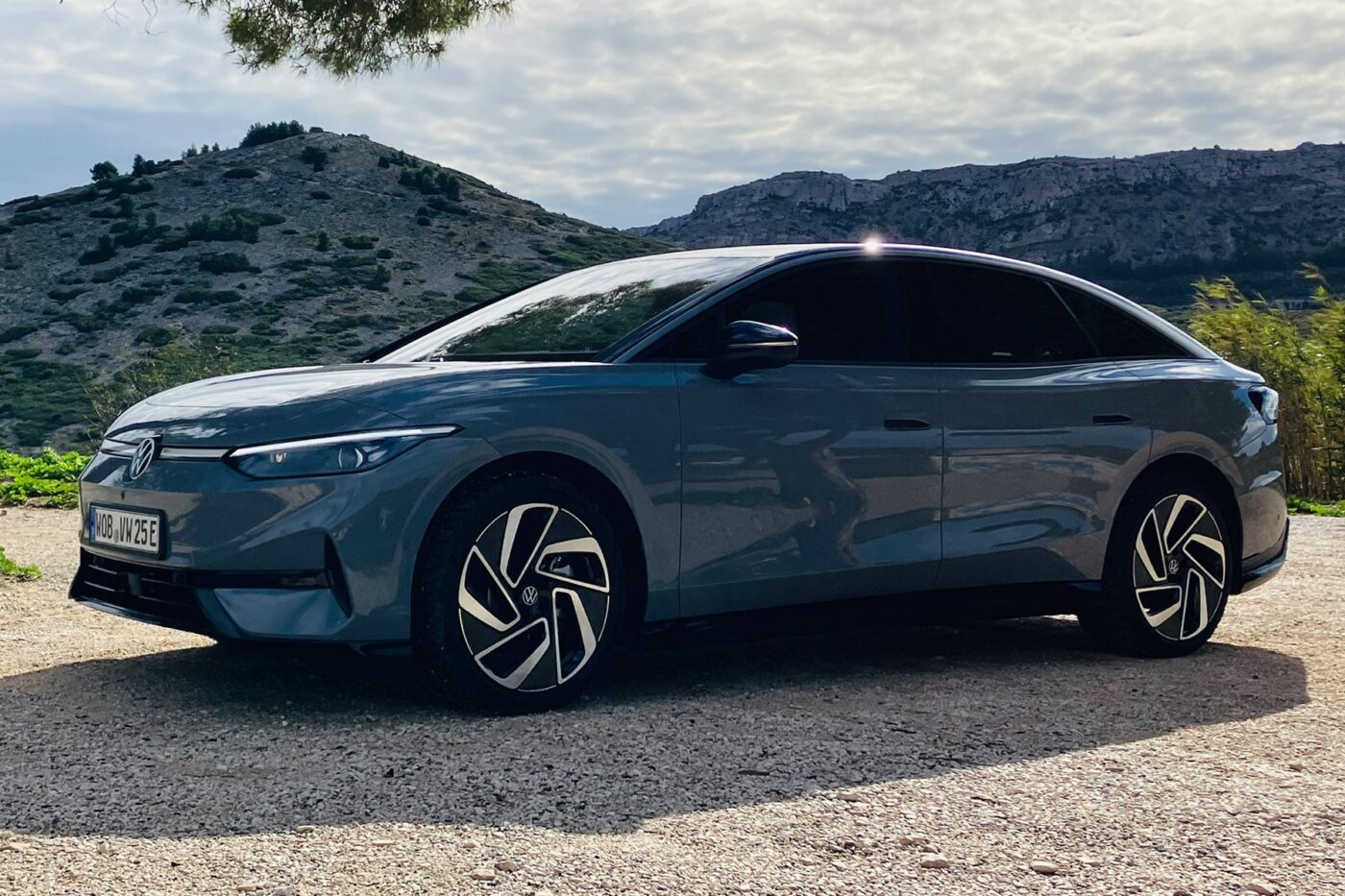
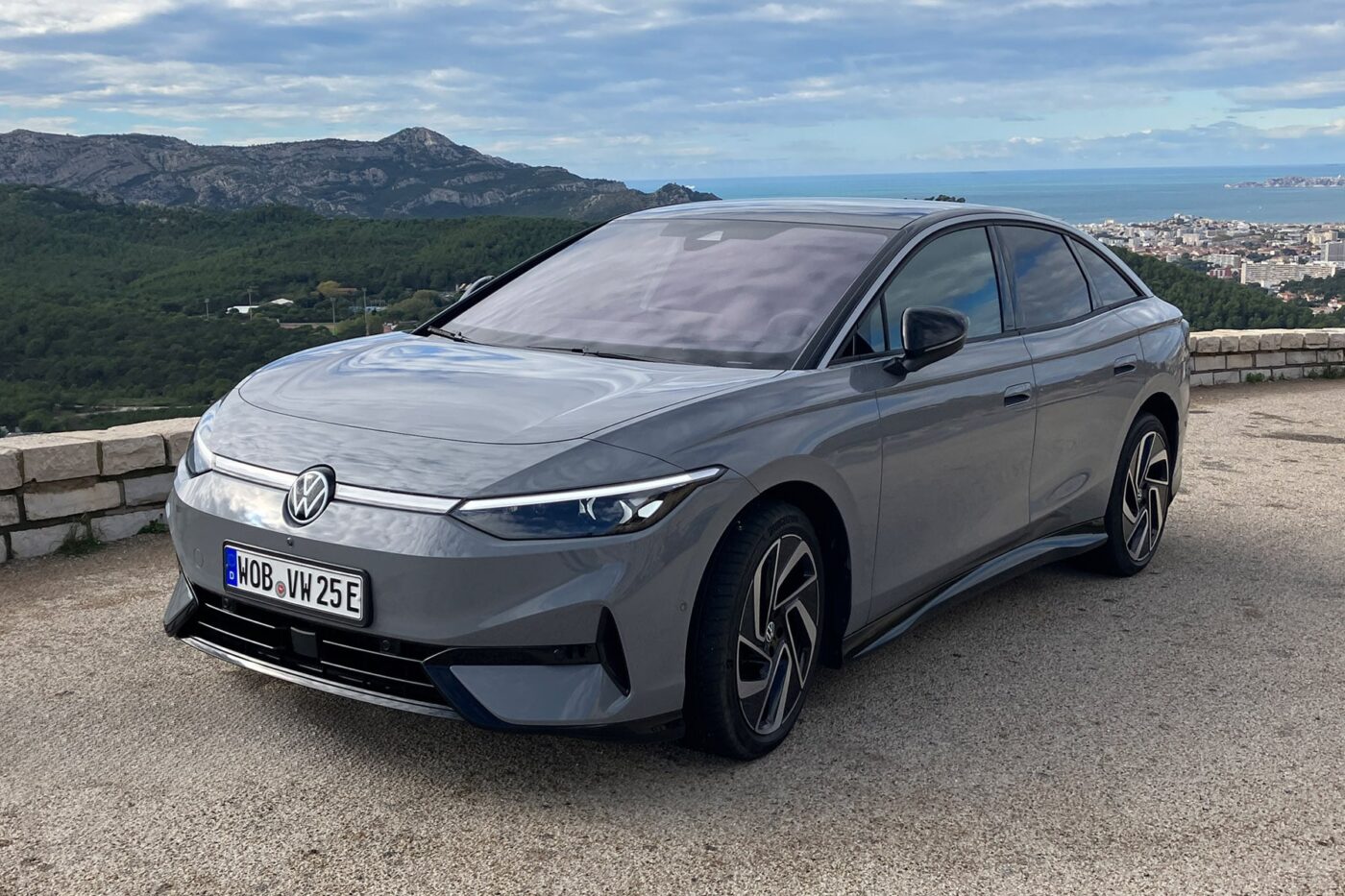
Legroom and comfort on long journeys
So, what can company car drivers expect from the ID.7? In addition to plenty of space, there is plenty of comfort. From the ten-colour ambient lighting (an option is available for 30 colours) to the heated multifunction steering wheel and the augmented reality head-up display fitted as standard for the first time in an ID model, the newcomer offers so much premium that you could almost find yourself in an Audi. However, in the electric age, features such as the ergoActive seats with moisture sensors and pneumatic pressure point massage, also optionally available at extra cost, are sure pleasant but not necessarily decisive when purchasing. For purists like us at electrive, who have been driving around the motorway for years in largely comfort-free Teslas without any great demands, are more likely to look at the electrical values, that’s efficiency and charging curves.
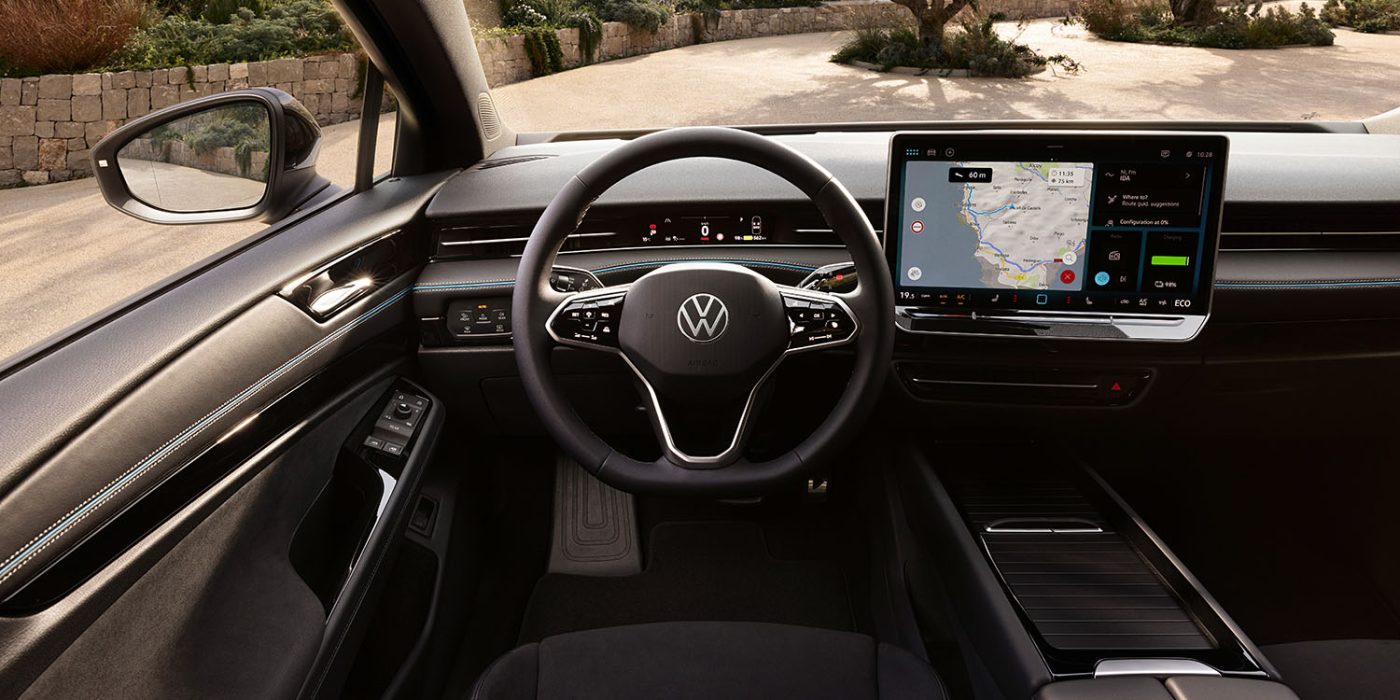
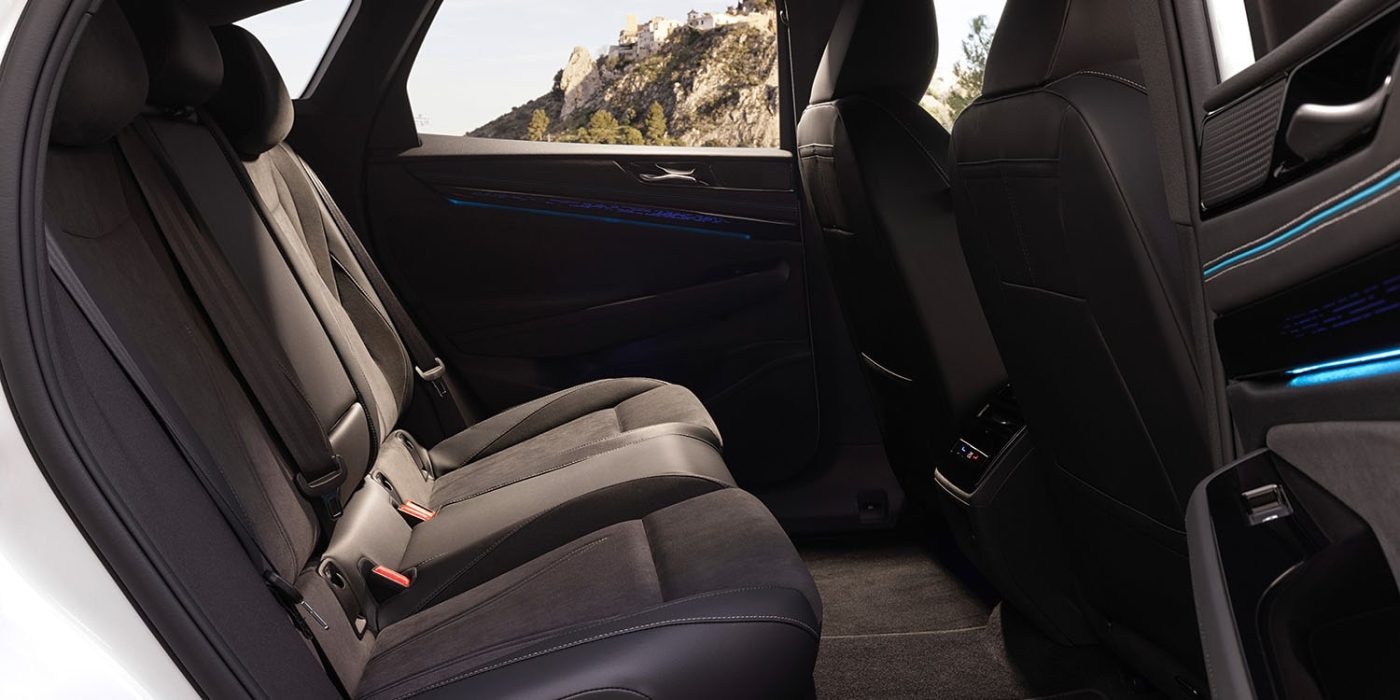
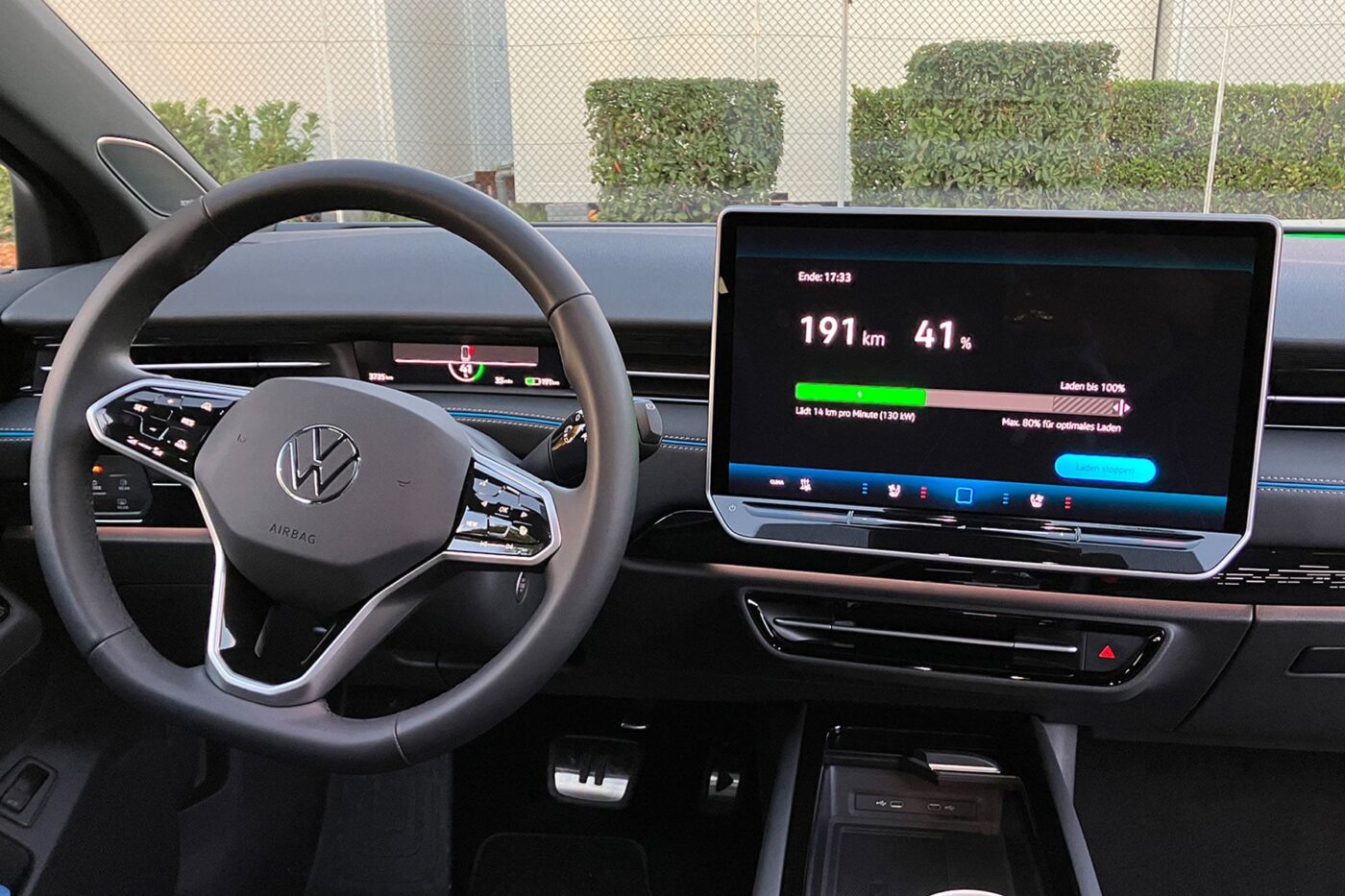
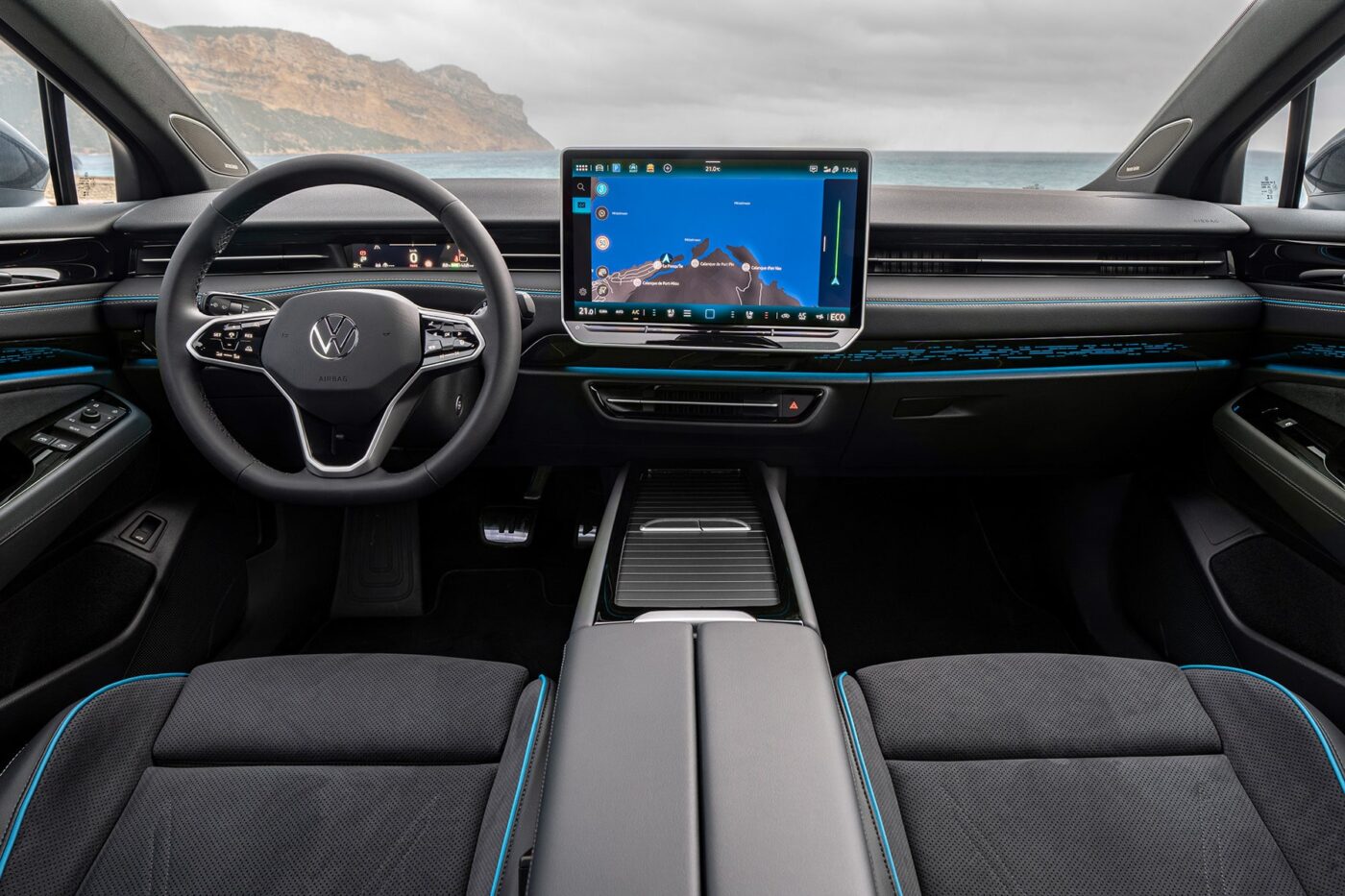
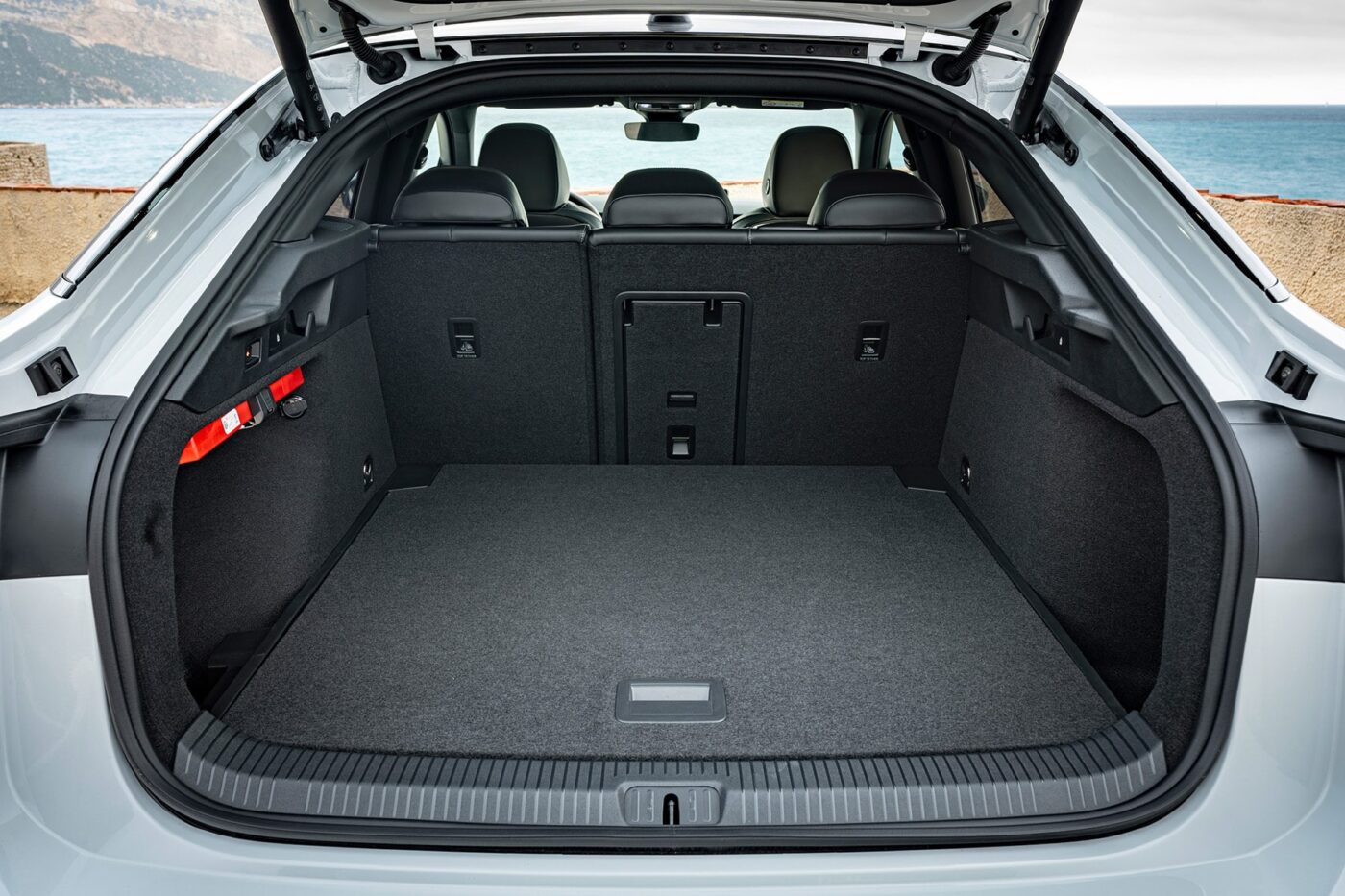
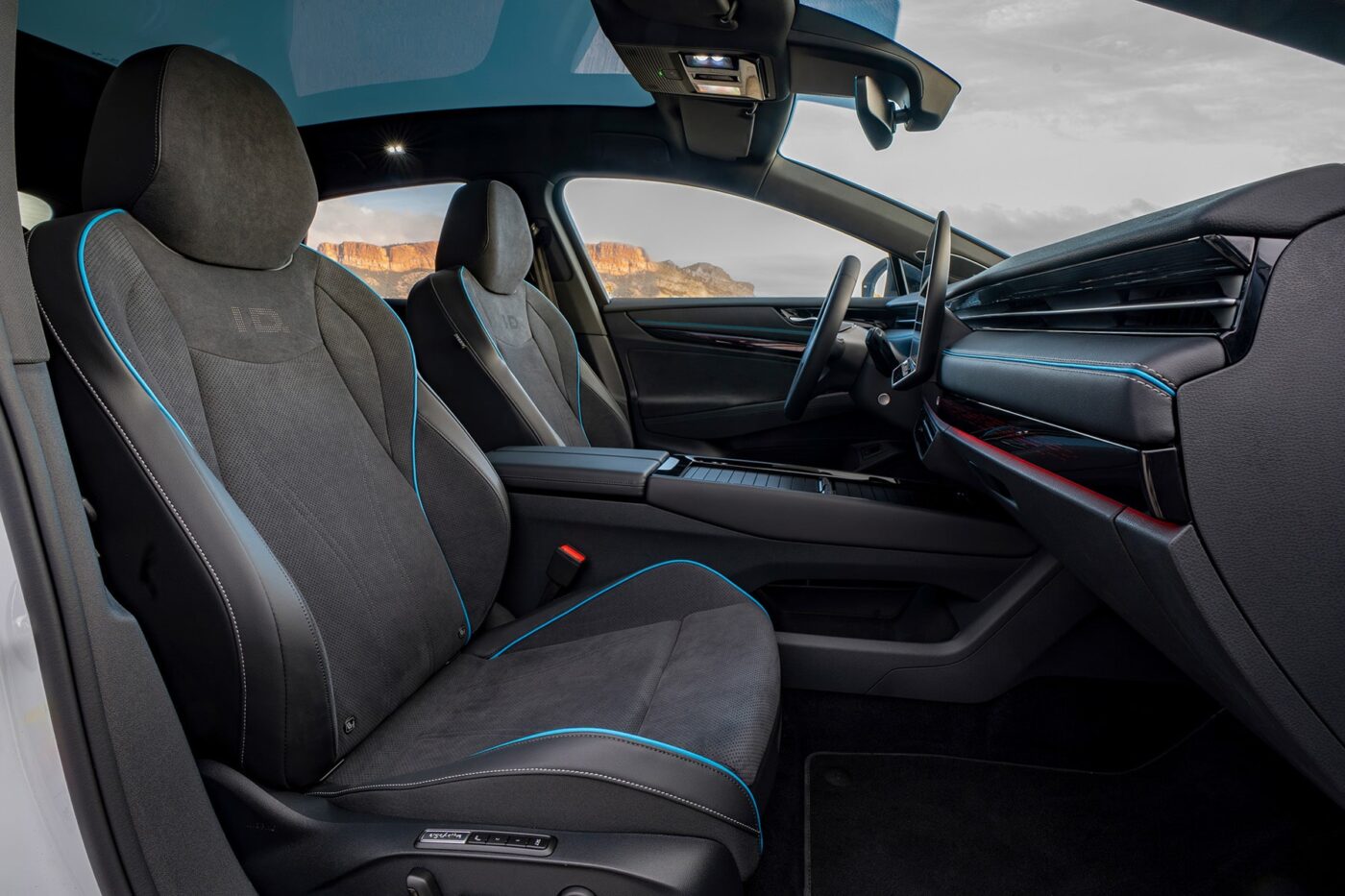
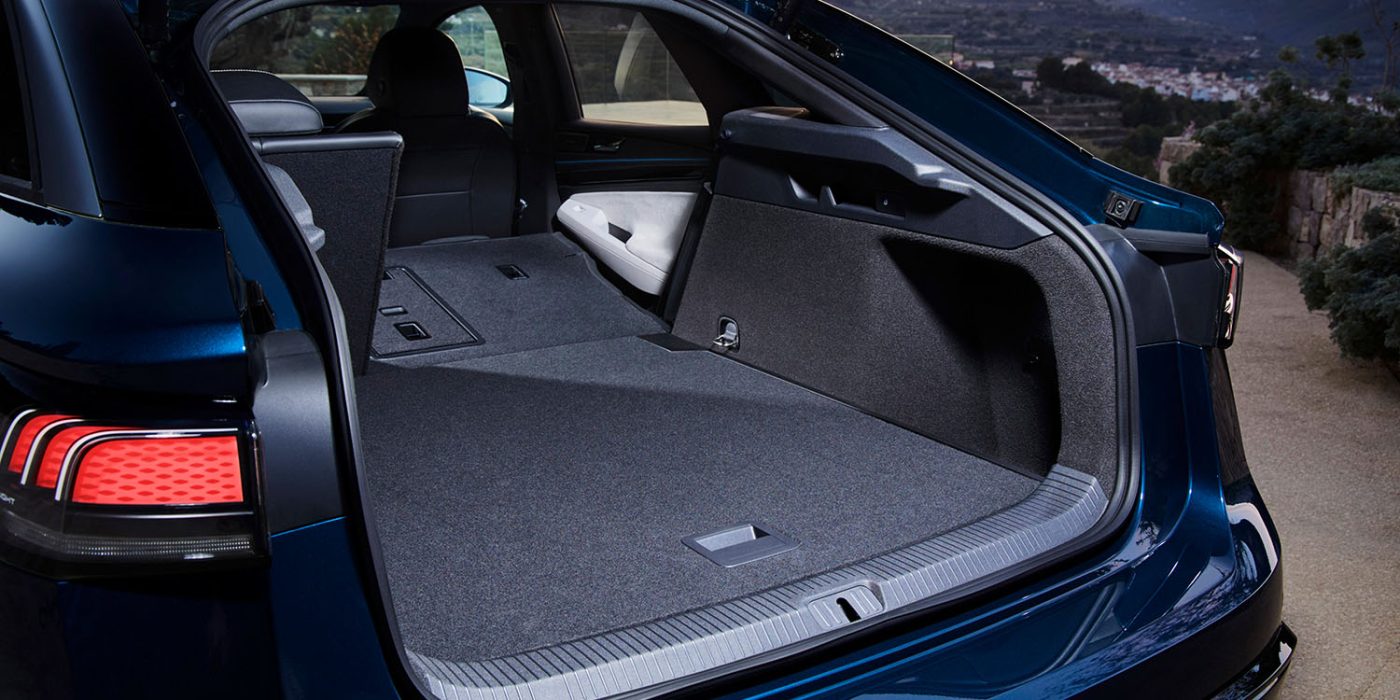
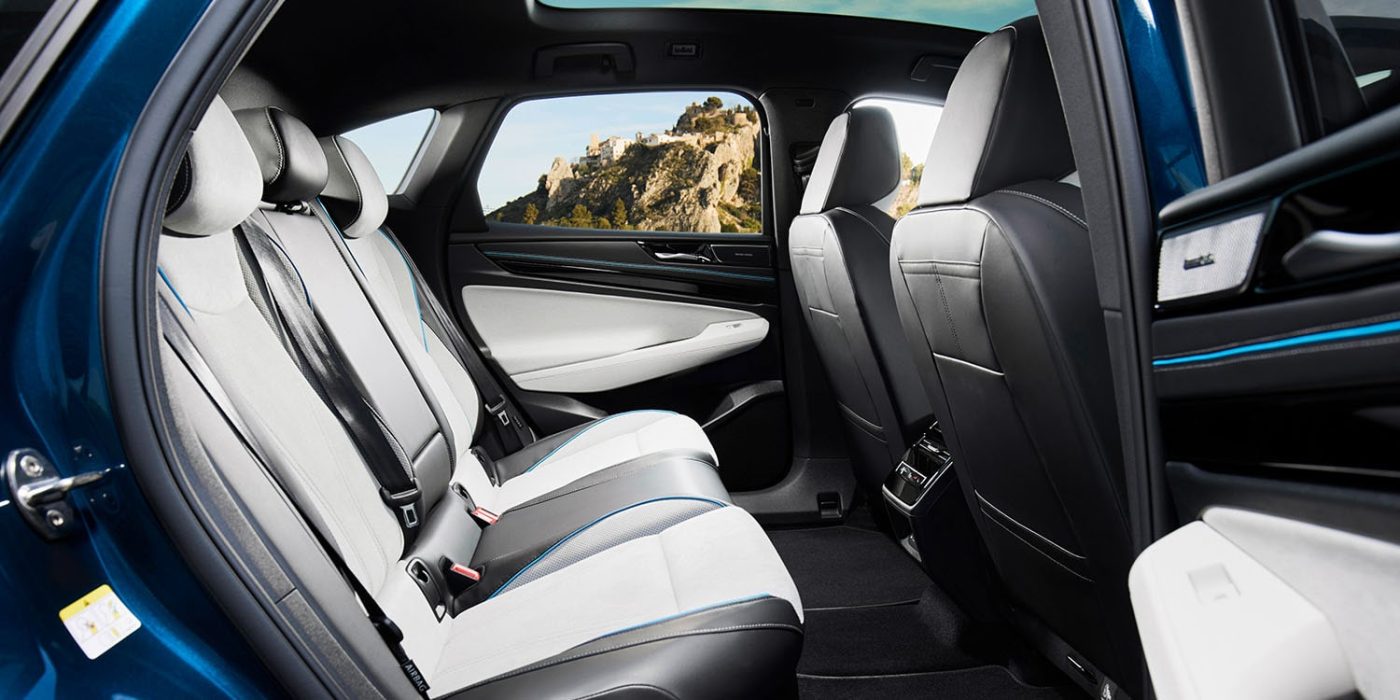
In this respect, the ID.7 sets new (VW-internal) standards in this domain, where VW has rarely been able to score points with the modular electric drive matrix. Our six-hour drive through Provence in late autumn, with a few photo breaks, motorway sections (max. 130 kph) and various sprints in the mountains, left an average consumption of 19.9 kWh in the onboard computer. Of course, the Tesla Model 3 is even more efficient, but this is a quantum leap for an electric car based on the MEB, especially with this level of comfort.
More power, more efficiency, more range
Such progress is down to the newly developed APP550 electric motor, which Volkswagen is particularly proud of. The permanent magnet synchronous machine (PSM) delivers 210 kW to the rear axle and mobilises a powerful thrust, especially when running. From a standstill, however, the 550 Nm of torque is too gently regulated for advanced electric car drivers. Suppose you can do without impressing at traffic lights, this comparatively economical rear-wheel drive primarily gains range despite the extra power. VW promises up to 621 kilometres in WLTP and therefore considers the ID.7 to be on a par with “models with petrol engines” – such as the Passat, which has been so popular with company car drivers to date.
Of course, the stated WLTP consumption of 16.3 to 14.1 kWh is as much grey theory as the colour of our test car in Provence. And yet, the ID.7 gets more range out of the 77 kWh battery (gross: 82) than any MEB electric car before. And when the announced ID.7 Pro S arrives with as much as 86 kWh net (and 91 gross) for up to 700 WLTP kilometres, sceptical sales representatives will finally run out of arguments for diesel engines. Unless, of course, they generally don’t pause before and during business trips.
Speaking of breaks, almost unintended (and unnecessarily), we navigated our test car to an HPC in the south of France. Without activating the new battery heater (it was a rather spontaneous decision to carry out the charging test), the ID.7 charged to 135 kW with a starting SOC of 33%. Under ideal conditions or with the (automatically or manually started) battery heater, 175 kW should be possible; the ID.7 Pro S even 200 kW. In both cases, the obligatory half hour for 10 to 80 per cent should be enough. That’s also enough time to discard the old coffee, get a new one and a healthy snack, and check a few e-mails.
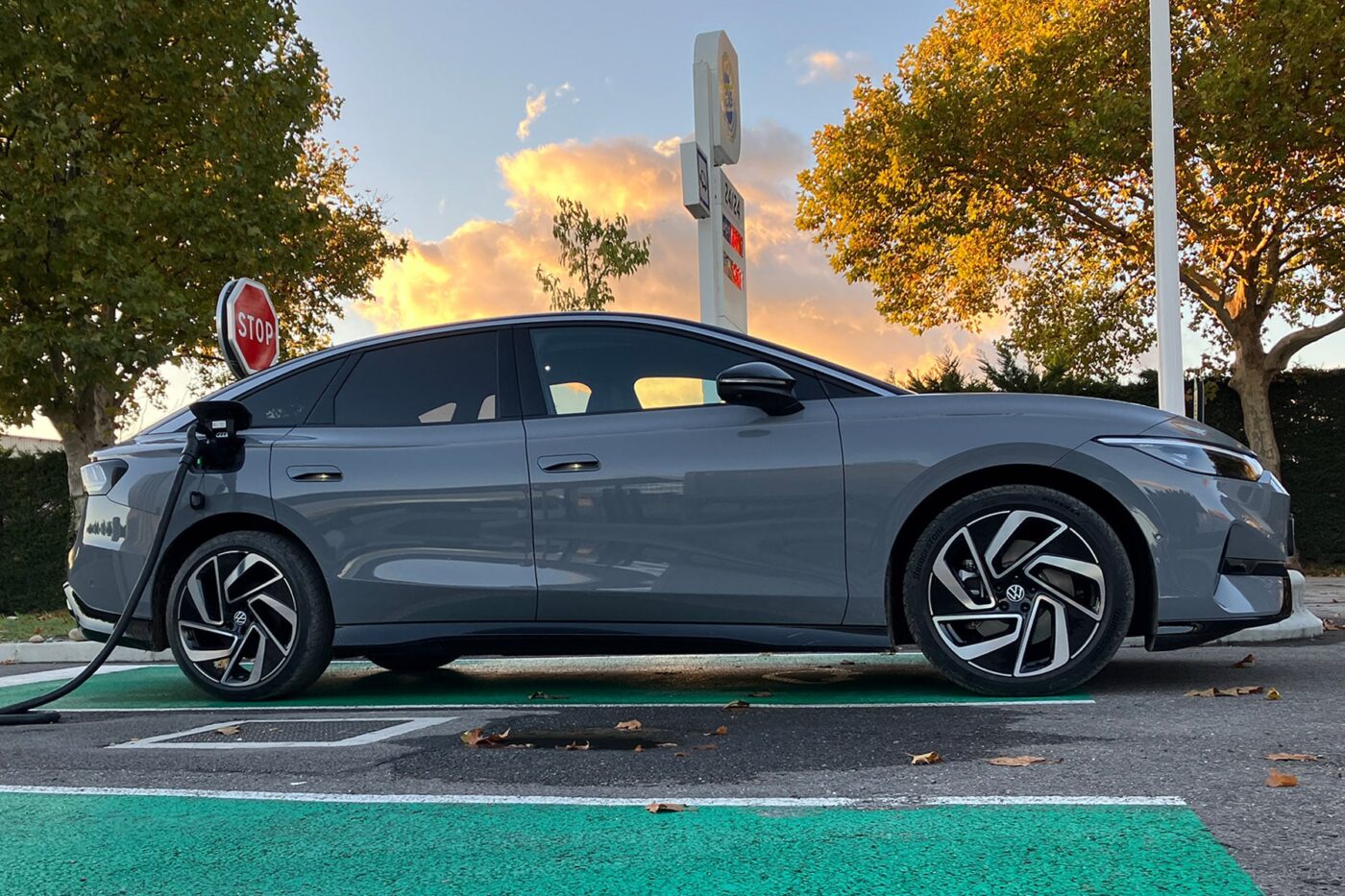
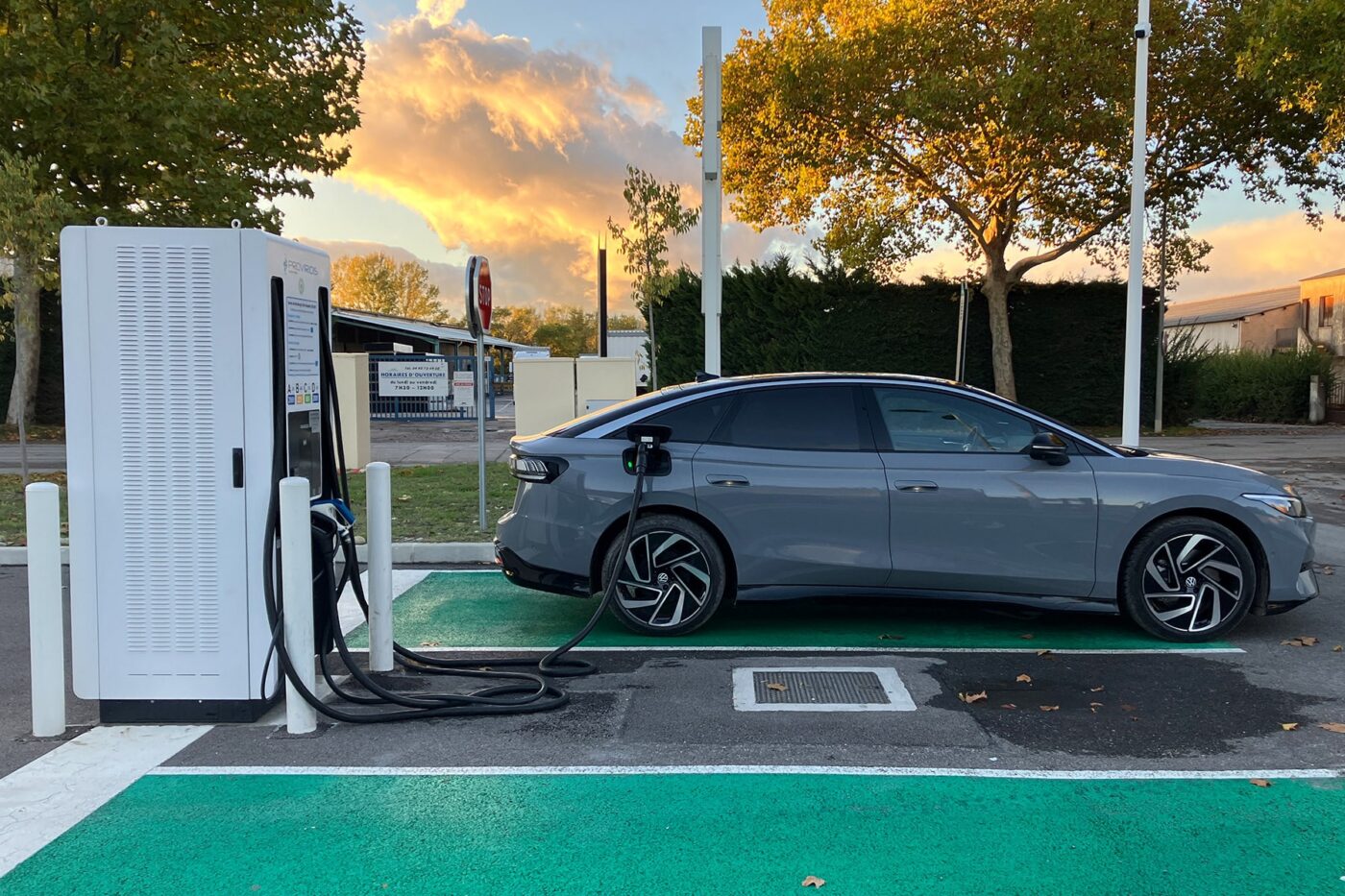
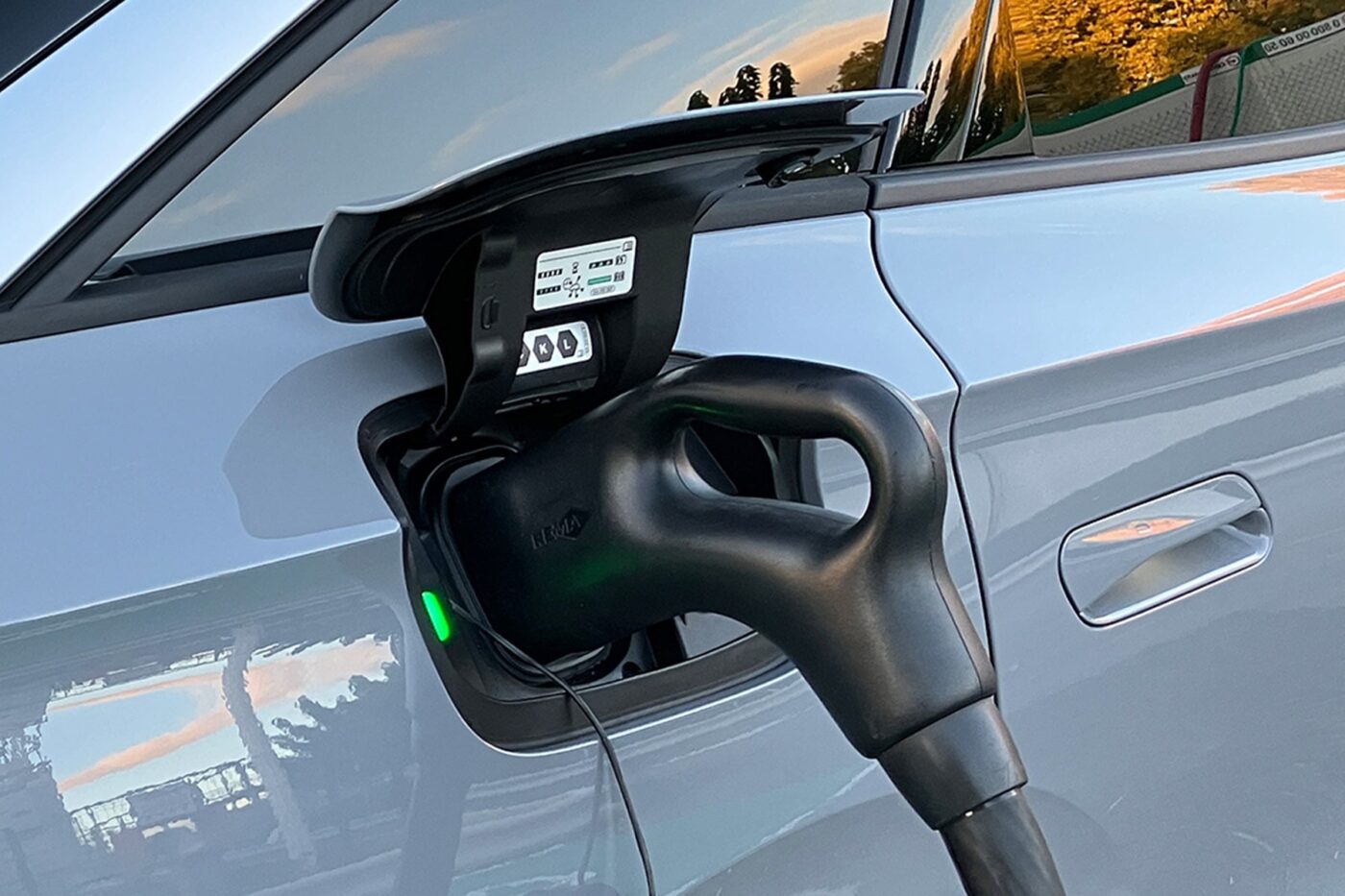
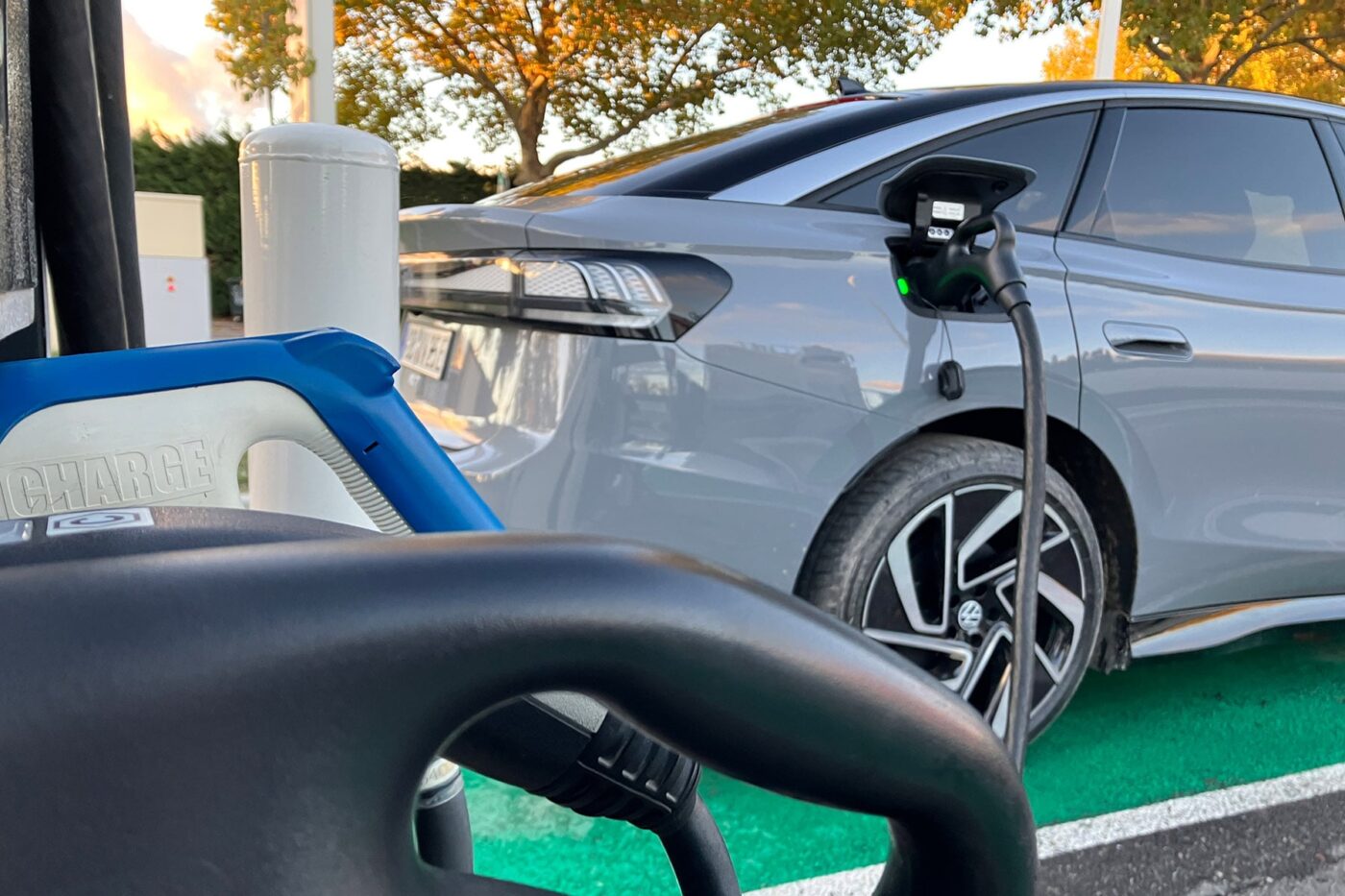
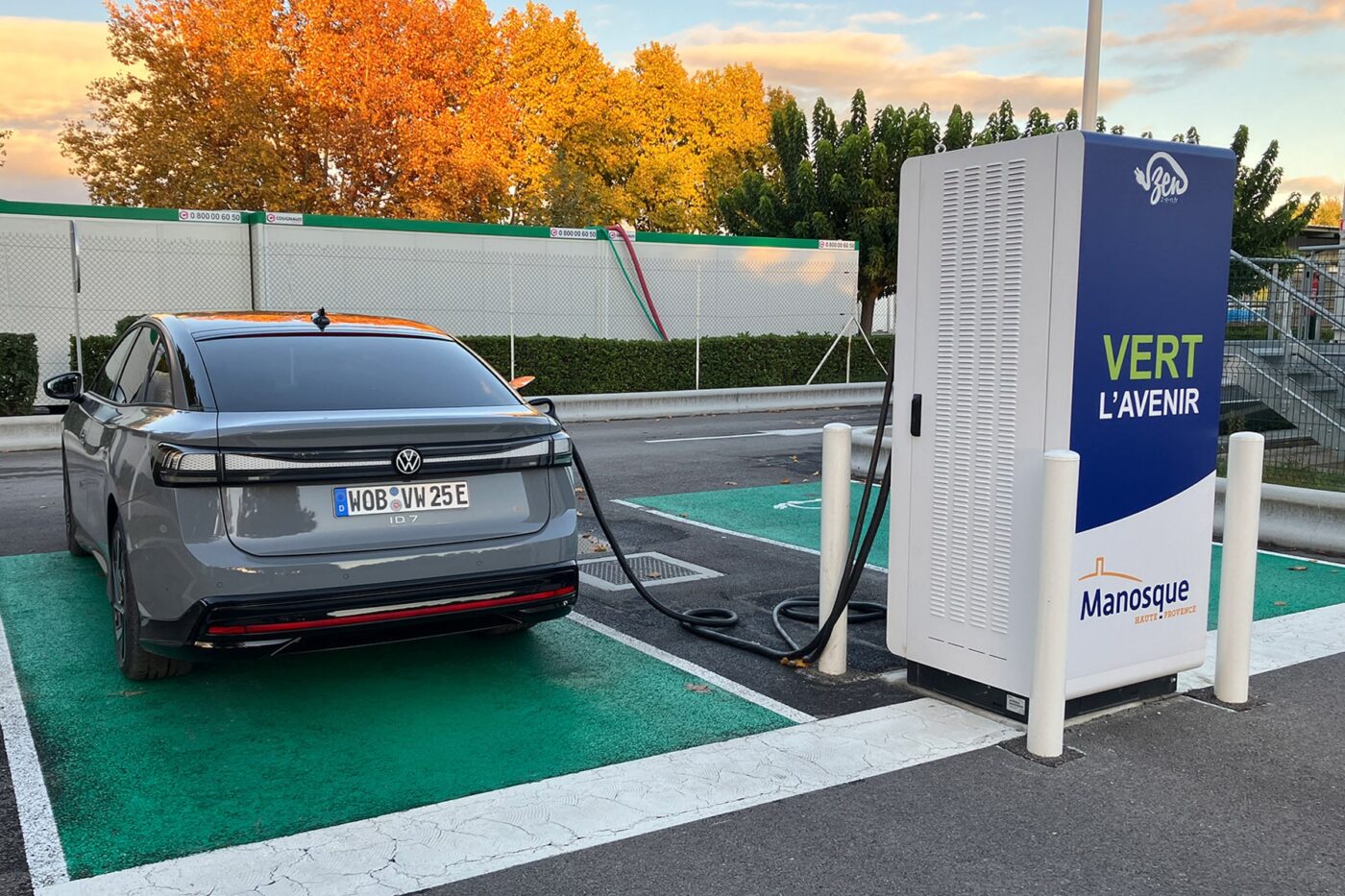
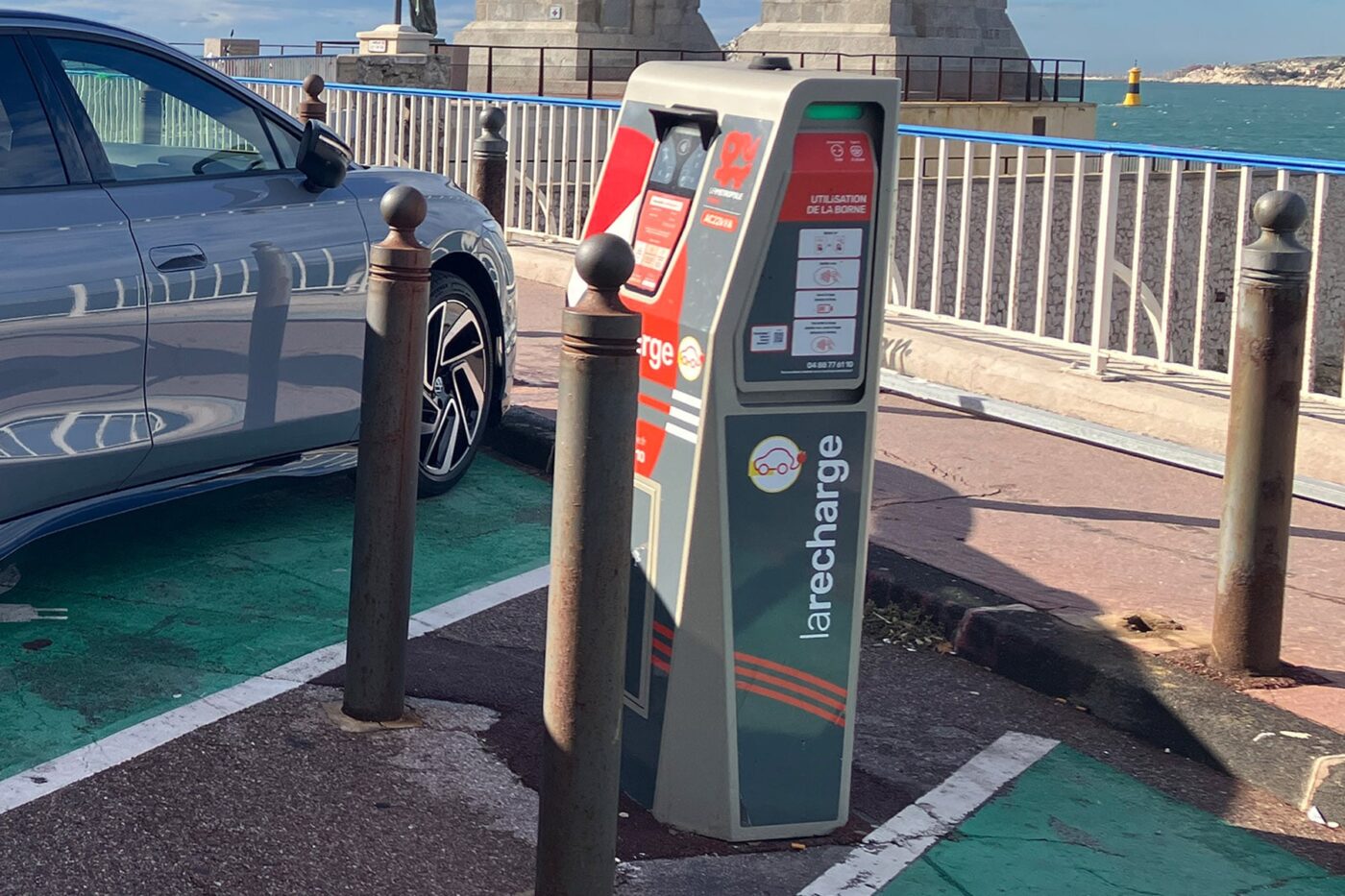
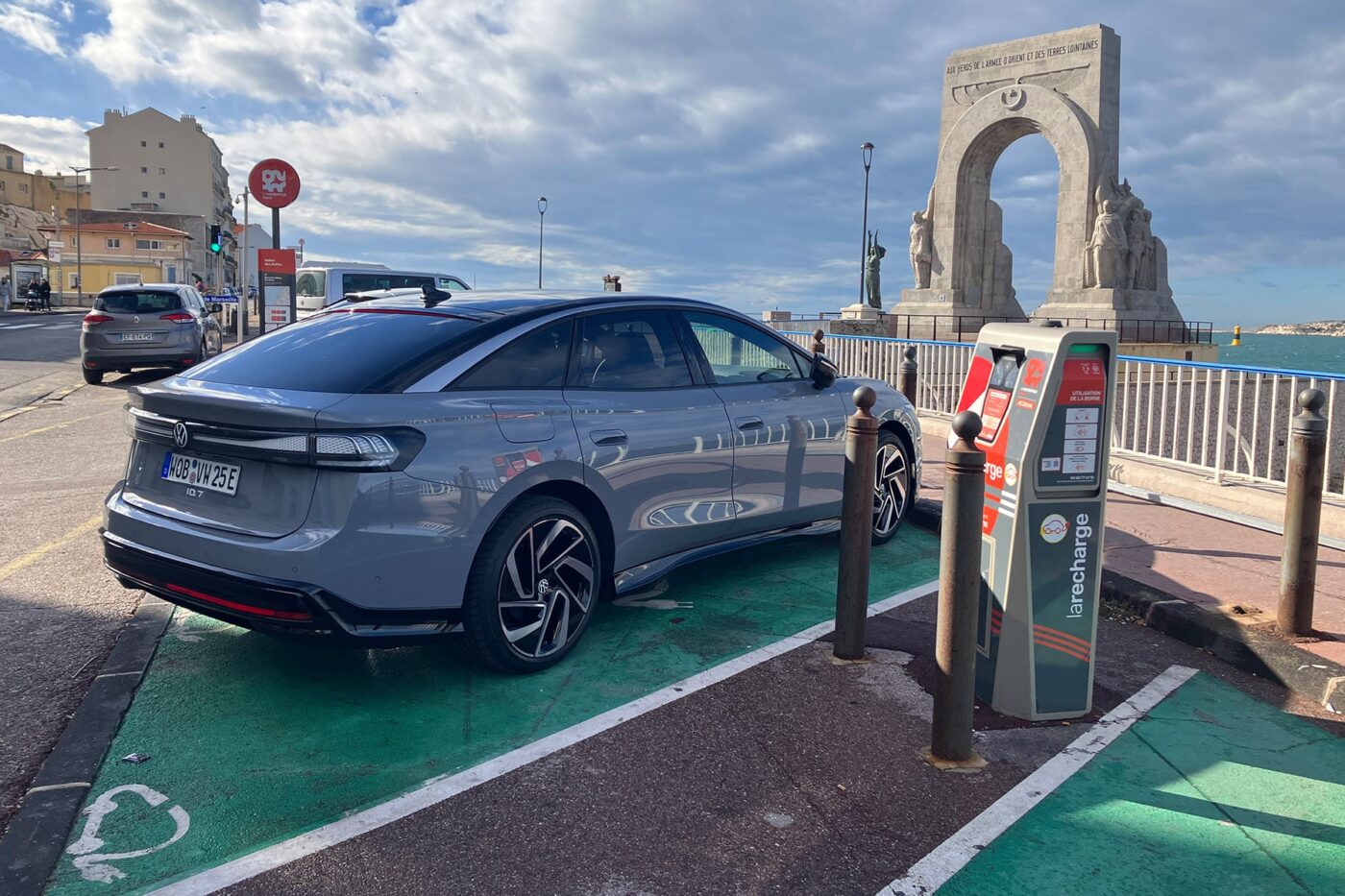
Would Van Gogh drive an ID.7?
What else would company car bliss require? Well, we could go on about the design of the ID.7 (according to VW, “as focussed and confident as it is likeable”). Or discuss other innovations from the engineers, such as the intelligent air vents in the interior or the optimised damper valve in the steering. We could also talk about the infotainment system, which still has a few menu depths and clicking pitfalls but seems much more mature than anything available in any MEB to date. But we are confident that none will make a difference to the company car.
But that’s precisely what the ID.7 could be – your new electric company car. Suppose it goes on sale at the turn of the year at prices starting at 56,995 euros, and the positive impressions from our test drive in Provence can be upheld on other, specifically German, motorways. In that case, this electric reinterpretation of the VW Passat will have the chance to revamp the tarnished image of the ID. models. And then, under favourable conditions, this upper mid-range saloon will become what its creators so desire – an electric “world-class car” from VW. Mouse grey, maybe, depending on the finish, but with Provence-inspired ambient lighting in the interior. Perhaps even Van Gogh would place an order.

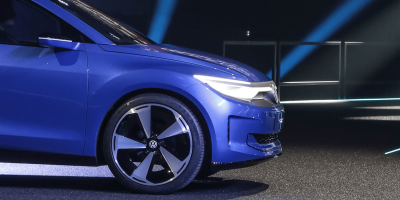
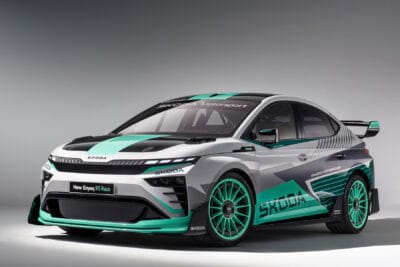
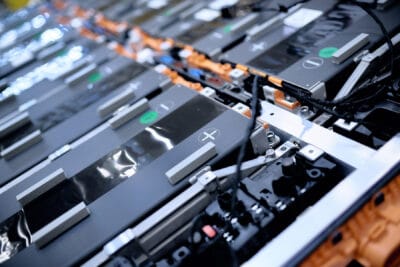
1 Comment